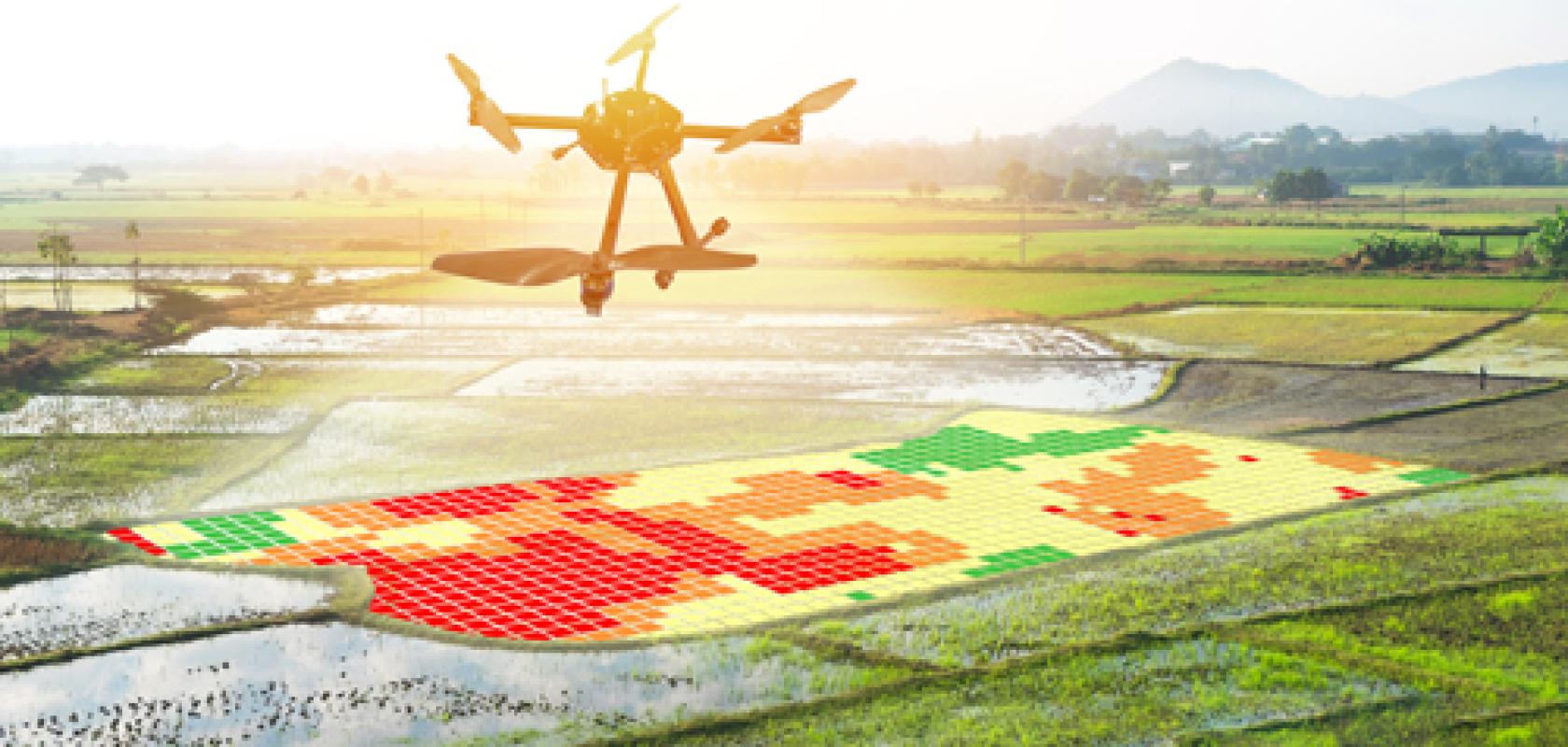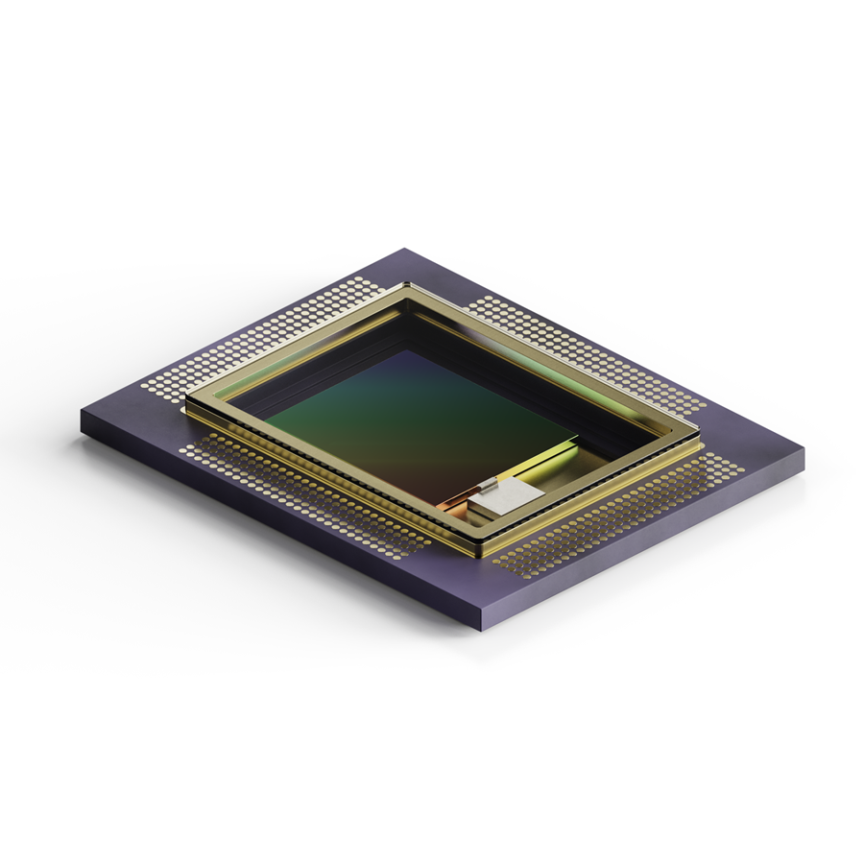Gemma Church talks to Pro-Lite Technology about next-generation, cost-effective hyperspectral imaging technologies
Imaging spectroscopy is an established technique where each captured pixel comprises many bands of light intensity data across the electromagnetic spectrum, instead of the three bands used by traditional RGB cameras.
We often divide imaging spectroscopy into two categories. There are multispectral cameras, which are restricted to narrow spectral bands (typically three to 15), and hyperspectral cameras, which can collect a larger number of distinct, yet contiguous bands across a wide spectral range – up to several hundred.
There are many different technologies for both types of imaging, each bringing specific strengths and a place in the growing market and application space.
Hyperspectral cameras, for example, are primarily used in remote sensing and agricultural applications. Scanning or push-broom cameras are installed on satellites, aircraft or UAVs, with push-broom scanning where one narrow spectral line in the scene is imaged at a time, and the line is split into its spectral components before reaching the sensor array.
On the 2D sensor array, one dimension is used for spectral separation and the second dimension is for imaging in one spatial direction. The second spatial dimension in the scene arises from scanning the camera over the scene (for example by means of a UAV or the movement of an aircraft).
The result is one 2D image for each spectral channel. Alternatively, every pixel in the image contains one full spectrum. Compared to ‘snapshot’ or real-time spectral imagers, push-broom instruments trade higher spectral and spatial resolution for reduced measurement speed.
Nick Barnett, business development manager at Pro-Lite Technology, explained: ‘Push-broom cameras are ideal for imaging objects on a conveyor belt or from a UAV or aircraft, where there is inherent scanning due to the movement of either the camera or object under investigation.’
In the company’s latest white paper, Pro-Lite Technology explains how hyperspectral imaging is changing. Several new approaches and applications are introduced, some of which have the potential to significantly reduce costs and resolve some of the long-standing technical and operational issues with these devices.
Both push-broom and snapshot technologies will continue to have a strong foot-hold in the market, according to Barnett, who added: ‘High-end applications using UAVs, aircraft and satellites will probably continue to be served by push-broom cameras that will provide increasing spectral and spatial resolution.’
We’ll also see these snapshot techniques appearing in an increasing number of consumer devices. Barnett added: ‘Snapshot techniques providing video-rate hyperspectral and multispectral imaging will be adopted by machine vision, robotics and medical applications. I expect there to be a huge increase in low-cost multispectral cameras designed for specific tasks based on bespoke filter sets. It also won’t be long before spectral cameras based on MEMS sensors or mosaic filter technology are embedded on mobile phones, with a selection of apps for specific tasks.’
But traditional push-broom cameras still have limitations, particularly when it comes to some applications, and often with regards to the cost of the system. Barnett said: ‘Where the object of interest is static, an external scanning mechanism is required with accompanying hardware and costs. Also, as push-broom cameras work on a scanning principle, it is not possible to produce video-rate 2D images.’
Recently, advances in high-resolution sensors, electronics and optics have pushed the rate of development for push-broom technologies, with Pro-Lite Technology’s solutions leading the way. The company is a supplier of specialist equipment and services to the photonics industry, including advanced hyperspectral, multispectral and infrared imaging systems.
‘Some of the newer cameras have internal scanning mechanisms to create the push-broom effect,’ Barnett explained. ‘As a consequence, there is no need for large external scanning mechanisms. This is also very useful for microscopy applications, as these cameras can simply attach to the c-mount of a microscope to produce hyperspectral images.’
New snapshot cameras also open up applications by providing live 2D spectral images with real-time classification. ‘Also, if classification can be done using embedded processing, the requirements for data handling can be reduced by just requiring transmission of the classified images. Some of the newer camera technologies are also lower cost, so more accessible to wider markets,’ he added.
Looking forward: AI and SWIR
For decades, hyperspectral imaging has often incurred high costs and required time-consuming processing techniques to produce meaningful data. This has limited its use in R&D and other academic applications. But things are starting to change.
Barnett said: ‘Push-broom cameras can provide excellent quality data but the resulting hypercubes are large, so data handling and storage need to be carefully considered. For many customers price remains the main issue but hopefully these cameras will be more affordable as the technology becomes more widely adopted.’
This is why developments in image processing and AI are going to be ‘hugely important for the future of hyperspectral imaging,’ according to Barnett. ‘The combination of pattern recognition and material identification, as well as improved real-time classification, will make hyperspectral a more powerful technique and will enable the technology to be more widely used.
‘The evolving camera hardware, combined with new image processing and AI, will undoubtedly bring spectral imaging into our daily lives and will increase the power of intelligent sensing.’
SWIR sensor developments are also an emerging trend, providing optimal spectral fidelity and sharp imaging optics. ‘The SWIR wavelength range is important for many applications but the cost of these sensors has historically been very high,’ Barnett explained. ‘There is potential for the newly emerging SWIR sensors to significantly reduce costs and make SWIR spectral imaging more accessible to many users.’
He added: ‘The next-gen SWIR sensors should lead to lower cost cameras, which will enable more applications in areas such as food and agricultural, security and defence, the pharmaceutical industry, as well as plastic and textile sorting/recycling.’
Pro-Lite Technology discusses these emerging trends and a range of upcoming applications in the spectral imaging space in its new white paper, Hyperspectral Imaging - A Technology Update.
‘The key message is that spectral imaging is quickly evolving and several new approaches are opening new applications and have potential to reduce costs,’ Barnett said.
If you would like to learn more on the subject you can download a White Paper by clicking here.


